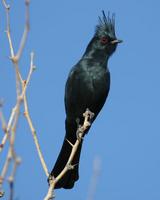Southwest Trekking -> Services -> Birding
Madera Canyon
Madera Canyon offers an incredible host of bird species and habitat
types with only a 45 minute drive from Tucson. Desert grasslands
give way to oak woodlands as we rise in elevation, with lush riparian
woodlands along the way. Several trails lead further up in eventually
topping out at ~10,000ft on Mount Wrightson. This is classic 'sky
island' country with the diversity of habitat and bird life only
it can offer. Rufous-winged Sparrows and Costa's Hummingbirds can
be observed in the lower grasslands while Painted Redstarts, Bridled
Titmouse and Hepatic Tanagers can be spotted in the steam side areas
further up the road. From here it is time to get out the hiking
boots and cross your fingers for a glimpse of an Elegant Trogon
along the first mile or so of trail. For the adventurous, the steep
windy Old Baldy Trail will challenge your stamina as well as your
birding skills. We will be peering into the conifer canopy with
hopeful rewards of Red Face, Olive and Grace's Warblers and perhaps
a Greater Pewee or two. It is hard to beat the beauty and diversity
of habitat and eclectic selection of species found at Madera Canyon.
Birding Narratives
Phainopepla
These strange and beautiful birds are exclusive to the Southwest
United States and Mexico the Phainopepla is an arid land specialist
almost entirely dependent on desert mistletoe plants for food and
nesting sites. The mistletoe is an oddity of the plant world in
that it is a parasite. Misletoes tap into the vascular system of
tree branches taking water and nutrients from the host tree an therefore
do not need to photosynthesize their own food. The berries of the
mistletoe and small insects are the main food source of the Phainopepla
and also supply a dense cover for nesting sites. This mutualistic
relationship benefits both Phainopepla and desert mistletoe. The
Phainopepla gets a steady supply of food and shelter and the mistletoe
gets dispersed to new host trees through the Phainopepla's droppings.
The mistletoe seeds contained within the berries survive the digestive
tract of the Phainopepla and germinate when deposited on branches
of Mesquite and other desert scrubland trees. |

